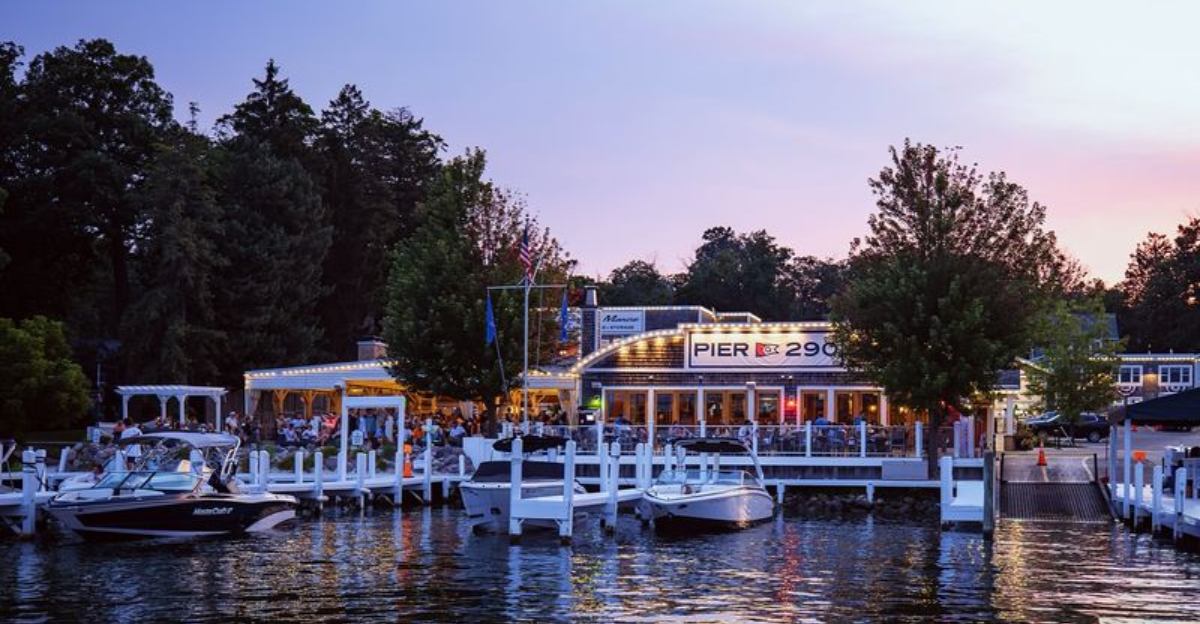16 European Gems That Americans Often Overlook
Most American travelers head straight for London, Paris, or Rome, unaware that Europe is filled with enchanting destinations quietly waiting off the beaten path.
Scattered across the continent are medieval towns perched high on dramatic cliffs, sleepy seaside villages where time seems to slow, and canal-lined neighborhoods that look like they were pulled from the pages of a fairy tale.
These hidden gems deliver the same charm, beauty, and culture as the big-name cities, only without the shoulder-to-shoulder crowds or long lines.
If you’re ready to wander cobblestone streets, savor local flavors, and snap photos that make your friends wonder how you uncovered such magic, these lesser-known European treasures are ready to impress.
The information in this article is provided for general travel inspiration and cultural interest. All details, descriptions, and image attributions have been reviewed for accuracy at the time of writing. Travel conditions, local policies, and visitor experiences may change over time, so readers should verify current information before planning a visit. No endorsement of specific destinations, businesses, or services is implied.
1. Ljubljana, Slovenia
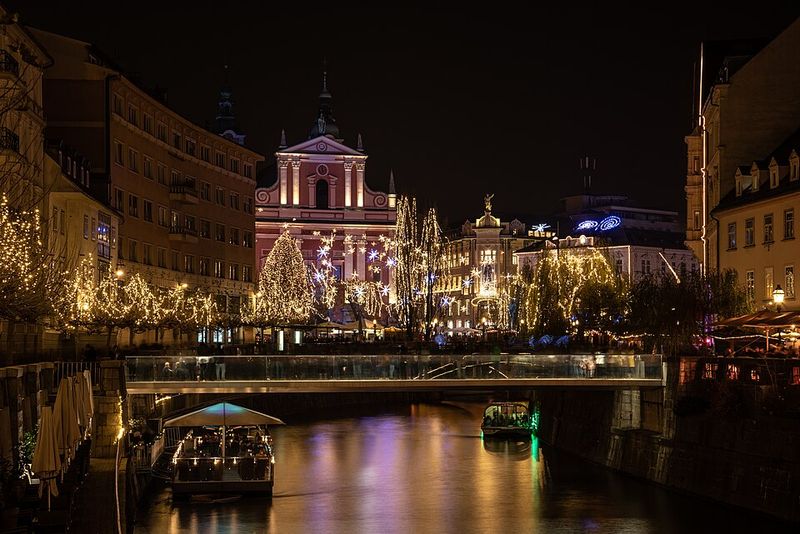
Slovenia’s capital feels like Europe’s best-kept secret, where pedestrian-only streets wind alongside the Ljubljanica River. Cafes spill onto cobblestone paths while dragons guard the bridges, and a funicular whisks you up to a medieval castle with panoramic views.
The entire old town is compact enough to explore in an afternoon, yet charming enough to keep you lingering for days. Street performers, open-air markets, and art nouveau architecture create a relaxed vibe that bigger capitals can’t match.
2. Colmar, France
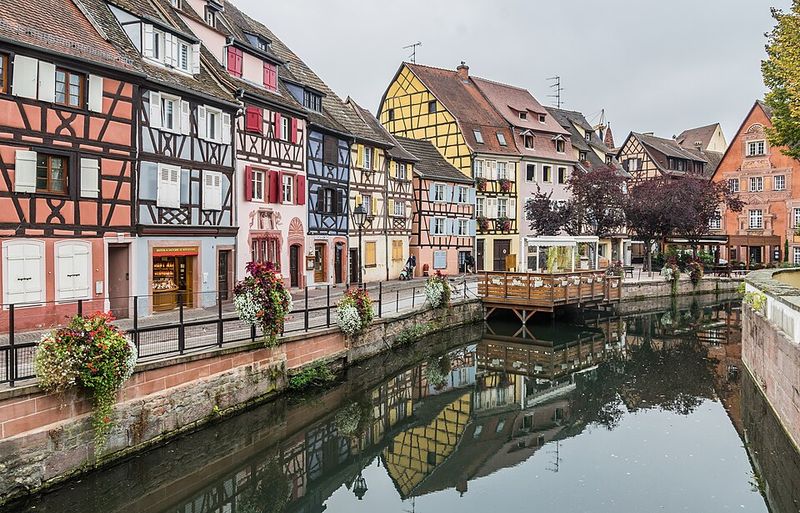
Alsace’s fairy-tale village looks like someone painted a storybook and forgot to tell anyone it was real. Half-timbered houses in pastel shades lean over narrow canals, while flower boxes overflow from every window and balcony.
Wander through Little Venice, where gondola-like boats drift past bakeries selling pretzels and pastries. The town inspired the animated village in Beauty and the Beast, and once you see it, you’ll understand why Disney animators fell in love.
3. Mostar, Bosnia And Herzegovina
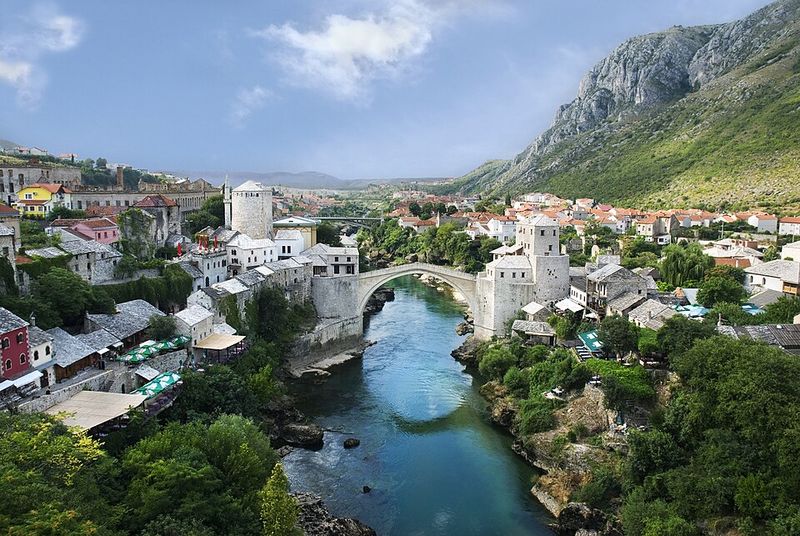
The iconic Stari Most bridge curves gracefully over the emerald Neretva River, rebuilt stone by stone after war destroyed the original. Local divers leap from its apex into the cold water below, a tradition that draws cheers from crowds lining the banks.
Cobblestone lanes twist through the Ottoman old town, where copper craftsmen hammer trays and teapots by hand. Minarets pierce the skyline, creating one of Europe’s most dramatic and historically layered cityscapes.
4. Rovinj, Croatia

Imagine a medieval town stacked like a stone wedding cake on a peninsula jutting into the Adriatic. Narrow lanes zigzag upward toward the hilltop Church of St. Euphemia, whose bell tower watches over red-tiled roofs and fishing boats bobbing in the harbor.
Artists have set up studios in old stone houses, and galleries peek out from every corner. At sunset, the entire town glows amber and gold, reflecting off the water in a way that makes you forget Venice exists.
5. Kotor, Montenegro
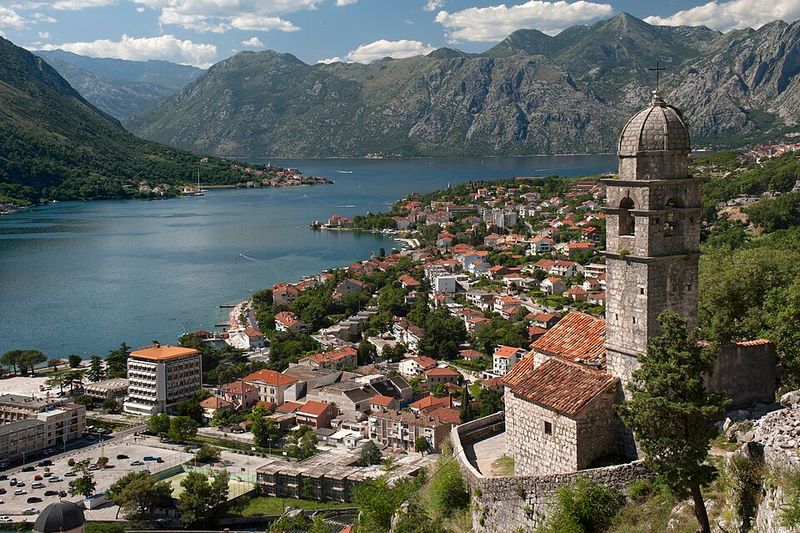
Towering limestone cliffs plunge into a fjord-like bay, where Kotor’s medieval walls snake up the mountainside like something from Lord of the Rings. The old town is a maze of Venetian palaces, hidden squares, and churches tucked into corners you’d never find without getting lost first.
Climbing the fortress walls rewards you with jaw-dropping views over terracotta roofs and sapphire water. Though Dubrovnik gets all the hype, Kotor delivers the drama without the cruise-ship crowds.
6. Matera, Italy
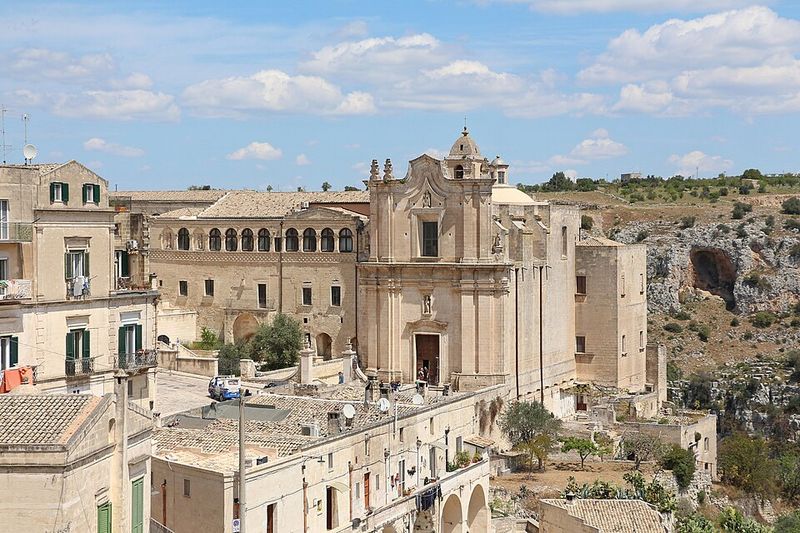
Carved into a rocky ravine, Matera’s ancient Sassi district looks like humanity’s first attempt at urban planning and somehow it’s breathtaking. Stone houses, churches, and cave dwellings stack on top of each other, some dating back thousands of years.
Once considered a place of poverty, the Sassi now host boutique hotels and restaurants inside former caves. Walking these lanes at twilight feels like stepping onto a movie set, which makes sense since James Bond and The Passion of the Christ filmed here.
7. Sibiu, Romania
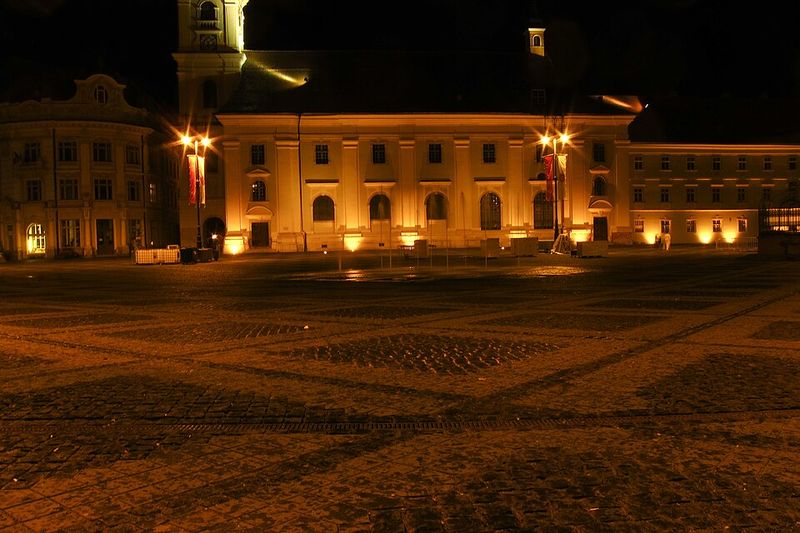
Transylvania isn’t all about Dracula; Sibiu proves it with pastel baroque facades and rooftops that seem to watch you. Those quirky dormer windows, nicknamed the eyes of the city, give the town a personality that’s equal parts charming and slightly eerie.
The Grand Square buzzes with cafes and festivals, especially when evening lights make the cobblestones glow. Though it was European Capital of Culture in 2007, Sibiu still flies under the radar for most American tourists chasing bigger names.
8. Tallinn, Estonia

Step through Tallinn’s medieval gates and you’ll swear you’ve time-traveled to the 1400s. Cobblestone streets wind past merchant houses, Gothic spires, and red-tiled roofs that look like they belong in a Grimm fairy tale.
Perched above the Baltic Sea, the old town is one of Europe’s best-preserved, yet it remains surprisingly uncrowded. Climb to Toompea Hill for sweeping views, then warm up with gingerbread cookies and hot drinks in a cozy cafe tucked into a centuries-old cellar.
9. Ronda, Spain
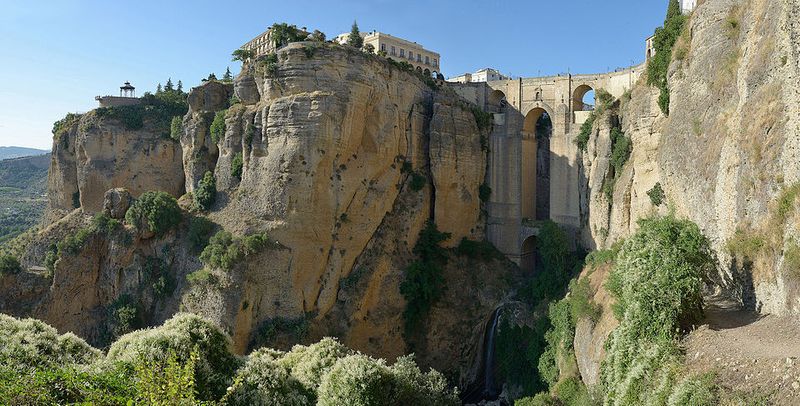
A dramatic gorge splits Ronda in two, and the Puente Nuevo bridge leaps across the chasm like a stone superhero. Standing on the bridge, you can peer straight down into the El Tajo canyon, where hawks circle and the Guadalevín River trickles far below.
Whitewashed buildings cling to the cliff edges, and Andalusian sunlight paints everything gold by late afternoon. Hemingway loved this place, and once you see those vertigo-inducing views, you’ll understand his obsession.
10. Gdańsk, Poland
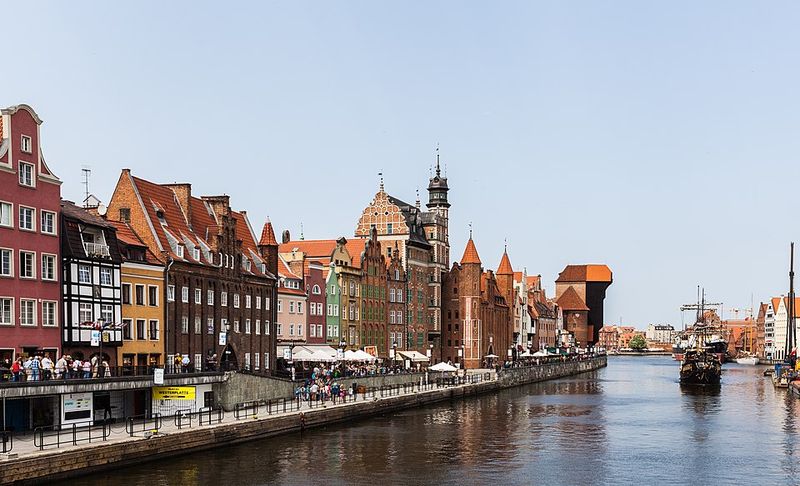
Rebuilt after World War II, Gdańsk’s waterfront now gleams with tall, narrow facades in every color imaginable. The Motława River reflects these gingerbread-style buildings, creating a postcard-perfect scene that tells a story of resilience and rebirth.
Wander the Long Market, where amber shops and cafes line the cobblestones, or visit the European Solidarity Centre to learn about the Solidarity movement. Though Kraków and Warsaw steal the spotlight, Gdańsk offers Baltic charm and history that shouldn’t be skipped.
11. Bergen (Bryggen), Norway

Bryggen’s leaning wooden warehouses line Bergen’s harbor like a row of crooked teeth, each painted in bold reds, yellows, and ochres. These former Hanseatic trading houses date back to the 1700s, though the wharf itself has been a bustling port for centuries.
Mountains and fjords frame the city, making Bergen feel like a gateway to Norway’s wild landscapes. While Oslo gets the capital spotlight, Bergen delivers Viking history, seafood markets, and scenery that feels straight out of a Norse legend.
12. Český Krumlov, Czech Republic
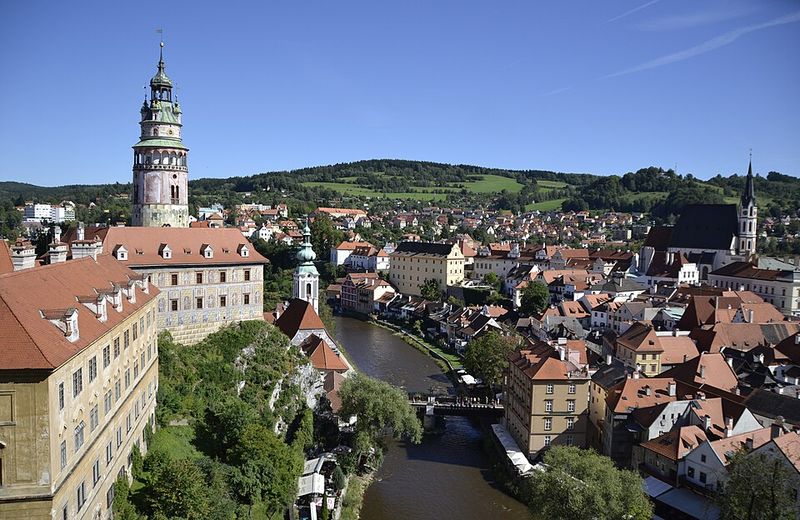
The Vltava River loops around Český Krumlov like a liquid hug, cradling a town that looks plucked from a Renaissance painting. Terracotta roofs cascade down hillsides, and a castle tower painted with trompe-l’oeil patterns rises above it all.
Though it’s a UNESCO World Heritage site, Český Krumlov remains quieter than Prague, offering cobblestone charm without the chaos. Stroll the lanes, peek into artisan shops, and grab a riverside seat to watch swans glide past medieval walls.
13. Lake Bled, Slovenia
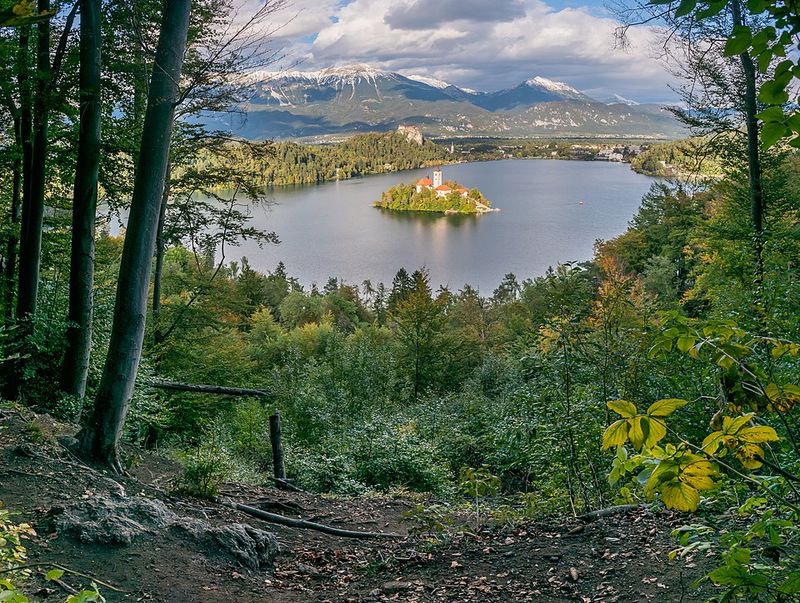
An emerald lake, a tiny island with a church, and a cliff-top castle backed by snowy peaks, Lake Bled looks like someone Photoshopped paradise. Traditional pletna boats row visitors to the island, where ringing the church bell is said to grant wishes.
Hike the trail circling the lake, or climb to Bled Castle for views that belong on a fantasy novel cover. Many travelers zip between Vienna and Venice without realizing this alpine jewel sits right in between, waiting to be discovered.
14. Hallstatt, Austria
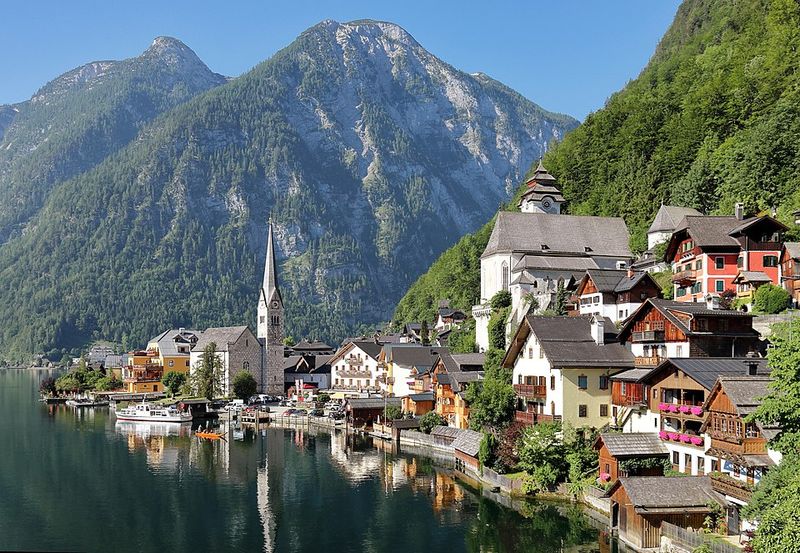
Hallstatt clings to the mountainside like a barnacle made of timber and pastel paint, its church spire reflected perfectly in the glassy lake below. Morning mist rolls across the water, turning the entire village into a scene worthy of a Romantic-era painting.
Part of a UNESCO World Heritage region, Hallstatt has been inhabited for thousands of years thanks to nearby salt mines. Though it’s become Instagram-famous recently, visiting in the shoulder season still offers moments of alpine tranquility and postcard-perfect charm.
15. Ghent (Graslei & Korenlei), Belgium

Ghent’s canalside guild houses stand shoulder to shoulder like a lineup of medieval skyscrapers, their stepped gables and ornate facades glowing at dusk. The Graslei and Korenlei quays form the heart of the old town, where locals gather for drinks and tourists snap photos from every angle.
Compared to Bruges, Ghent feels less touristy and more lived-in, with university students biking past Gothic towers and modern street art popping up in unexpected corners. It’s Belgium’s best-kept secret, hiding in plain sight.
16. Tbilisi, Georgia

Tbilisi sprawls across a river valley where Europe and Asia blur into something entirely its own. Wooden balconies overhang narrow lanes, sulfur baths steam in domed buildings, and the Narikala Fortress keeps watch from the cliffs above like an ancient guardian.
Georgian hospitality is legendary, and the food, think khachapuri and khinkali, rivals any European cuisine. Though Georgia sits at the crossroads of empires, most Americans still haven’t discovered this capital’s layered history and offbeat charm.






